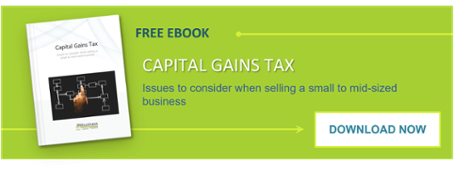
If you are considering selling a business at the larger end of the SME market, with a longevity of orders and forward earnings, it’s important to consider the concept of earnouts and contingency payments, because it will come up from interested parties.
It’s also important to recognise that earnouts as part of the purchase price have capital gains tax implications, so expert advice is essential.
What is an earnout?
So, what is an earnout arrangement? Here’s a simple definition from the Australian Tax Office:
Earnout arrangements are a way of structuring the sale of a business to deal with uncertainty about its value. The contract for the sale of the business (or assets of the business) provides for an initial lump sum payment by the buyer and a right to subsequent financial benefits that are contingent on the performance of the business for a specified period after the sale.
How do they work in practice?
First you need to understand the concepts of business maintainable earnings (BME) and multiple of earnings. (Readers of our blog and eBooks would be very familiar with these terms.)
- BME reflects the ability of a business to generate earnings into the future. It is the earnings of a business – based on recent and current performance – that an owner is likely to achieve as they move forward on the same going concern basis the business is operating on today.
- Multiple of earnings is a common business valuation method. The ‘market multiple’ is determined by how many years or months a purchaser is prepared to wait before they recoup the value they paid the outgoing business owner.
Take a look at this video to see how earnouts and contingency payments can be used in practice.
Counter-risk for vendors
There is often a lot of negotiation around earnouts and contingency payments, and there are sweet spots that are fair to both parties involved in the business sale transaction.
The trick is to get a comfortable deal package which gives the vendor a sufficient amount upfront and a fair basis for managing the risk between the purchaser and the vendor during the transition process.
If we’re acting for a vendor, we’re obviously going to work very hard to protect them upfront because, once the deal closes, the business will be owned by a different party.
This means there is a counter-risk on the vendor’s side once the business is sold, because they don’t have control over what’s happening in that business and whether or not it achieves performance targets that may have been agreed to as part of an earnout arrangement.
If you would like advice about earnout or contingency arrangements, or any other business transaction matters as either a vendor or prospective purchaser, contact the team at JPAbusiness on 02 6360 0360 or 02 9893 1803 for a confidential, obligation-free discussion.
 James Price has over 30 years' experience in providing strategic, commercial and financial advice to Australian and international business clients. James' blogs provide business advice for aspiring and current small to mid-sized business owners, operators and managers.
James Price has over 30 years' experience in providing strategic, commercial and financial advice to Australian and international business clients. James' blogs provide business advice for aspiring and current small to mid-sized business owners, operators and managers.

